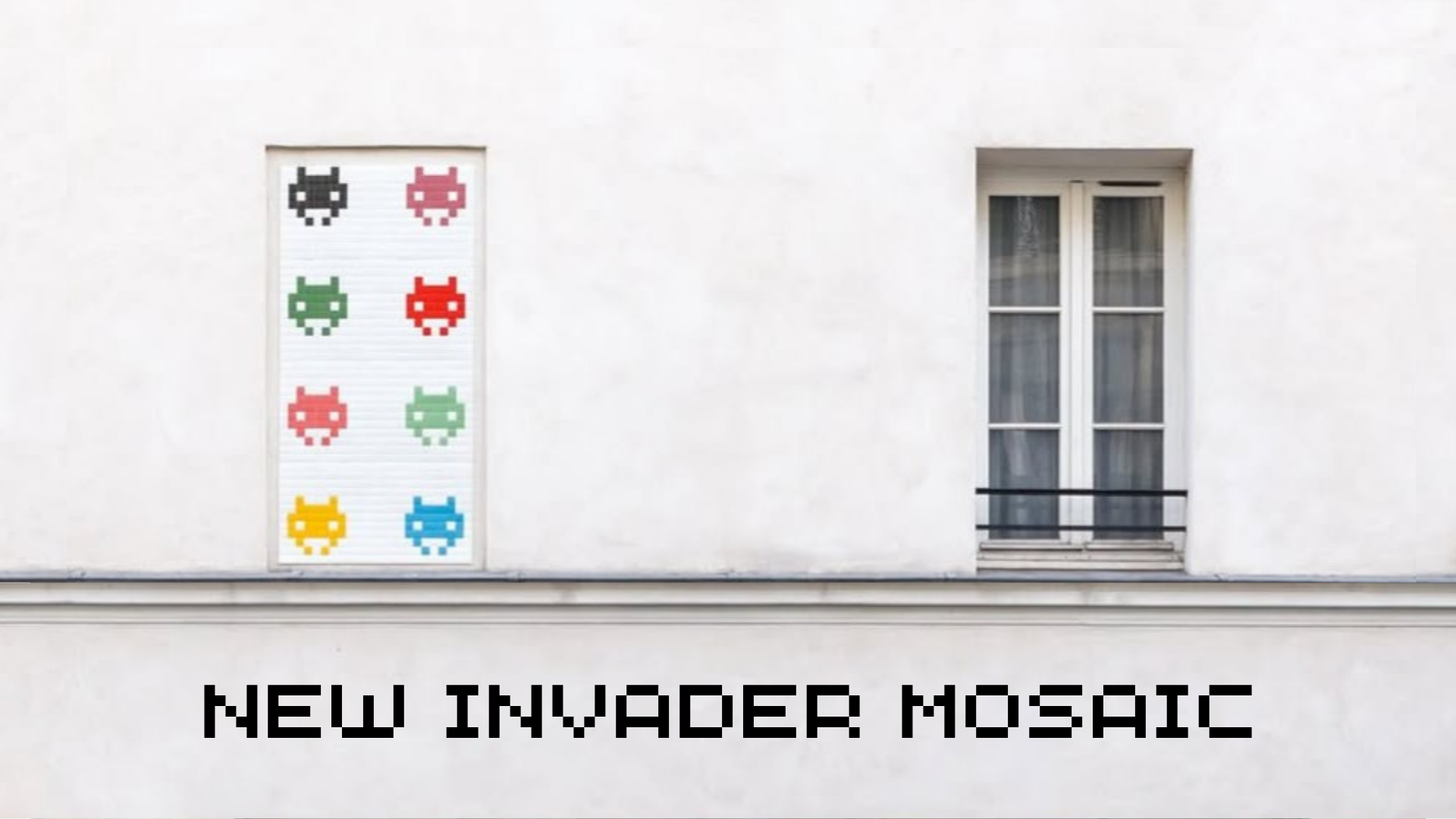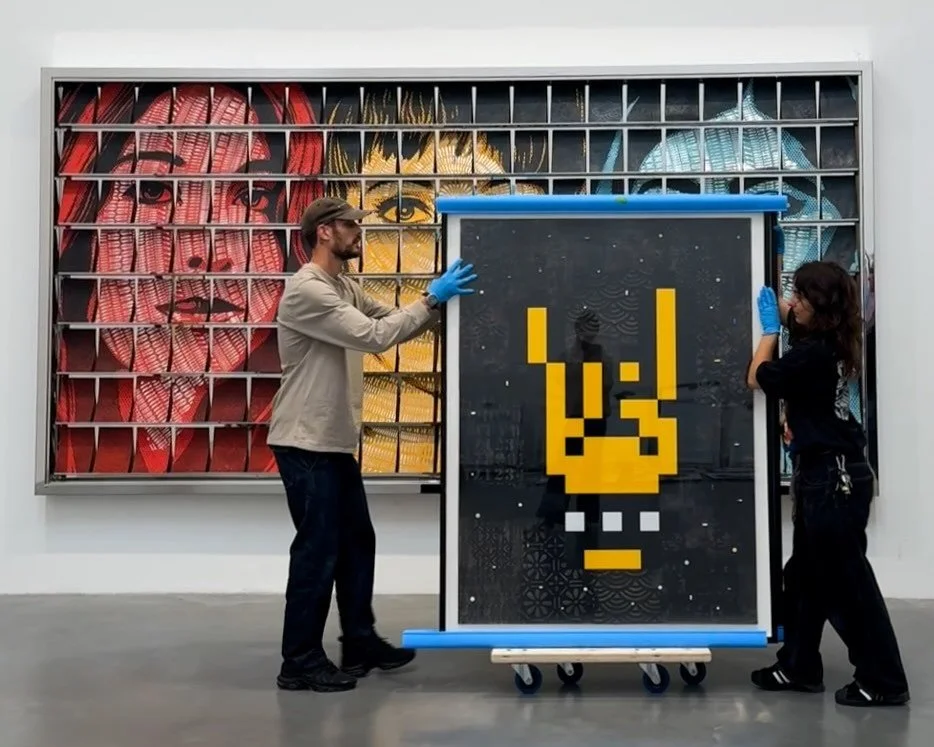The Origins of Invader
read more
In street art culture, few names resonate as powerfully as Invader. Known for his pixelated mosaics, Invader has left an indelible mark on urban landscapes across the globe. But have you ever wondered, how did Invader become the renowned street artist we know and love today? Join us as we delve into Invader's origins and explore his early influences as he evolves into his current self.
Early Life
The Mysterious Beginnings
Invader's real identity remains a secret shrouded in mystery and speculation. We know he comes from France and began his artistic journey in the late 1990s. There are rumours of him being Franck Slama, but they lack concrete proof and evidence.
I define myself as an UFA, an Unidentified Free Artist.
-Invader
Influences
During Invader’s teenagehood, the arcade game Space Invader took over the world. Invader became deeply in love with video games, it was soon deeply rooted in his mind, making the initial subjects featured in Invader’s work alien-like pixelated creatures. In his eyes, they are the perfect icons of our time where digital technologies are the heartbeat of our world.
He incorporated the burgeoning street art scene he witnessed in France and the digital aesthetics of the video games he grew up playing, and created a unique niche that would set him apart from the rest on an international platform.
The Birth of Invader
The concept of invasions emerged from Invader's fascination with the pixelated graphics of early arcade games. He gives a material appearance to pixelization through small, colored, and squared ceramic tiles to recreate the look of digital pixels and bring his favorite characters to life. These games with their simple yet captivating visual style, inspired him to transpose their pixel art into the physical world.
These canvases were the perfect material to display his original characters directly on the walls of Paris, and soon after in cities around the globe. Each of these unique pieces becomes a fragment of what Invader calls his tentacular installations.
Beach invasion
The First Invasion
PA_001
It is an open secret to everyone that Paris is the city where he placed his first-ever Invader. It is the place where he honed his craft and developed his signature style. The earliest work PA_001 was modest in scale but ambitious in concept, placing the pixelated mosaic in an unexpected public space. It was located at 4 Passage de la Main d'Or in Paris. However, due to repairs to the building's exterior, the artwork is no longer visible as it was covered up. It was unsure whether it was removed prior to the renovation or it was buried below the concrete due to the tough adhere used to secure the work. Therefore, some said that it was a modern mosaic fossil.
It was sure that the reaction received was immediate and overwhelmingly positive. If not, Invader wouldn’t expand his work worldwide.
With the success of his initial projects, Invader began to travel and spread his art to other cities. Each new location presented unique challenges and opportunities, allowing him to refine his techniques and adapt to different urban environments. From the bustling streets of New York City to the historic alleys of Rome, Invader's mosaics began to pop up worldwide.
The Artistic Evolution
As Invader's work evolved, so did the complexity and variety of his mosaics. Early pieces often featured simple, recognizable characters from classic video games, but over time, he began to incorporate more intricate designs and a wider range of subjects. This evolution reflects both his growing skill as an artist and his desire to keep his work fresh and engaging.
In addition, technology played a crucial role in Invader's art. Not only does it inspire the aesthetic of his mosaics, but it also aids in their creation and documentation. Invader has embraced digital platforms to share his work with a global audience, further blurring the lines between the physical and digital worlds. In addition, the official app FlashInvaders he published long ago helps the interaction between the audience and the artist.
Conclusion
Invader's work has transcended from his street art origins to become a global phenomenon. His influence on the street art scene cannot be overstated. He has broken out of the ordinary to explore the potential of pixel art and to think creatively about the integration of digital aesthetics into urban environments. His success has also helped to legitimize street art as a respected and valuable form of creative expression.
The story of Invader is one of innovation, perseverance, and a deep love for both art and technology. From his mysterious beginnings in Paris to his status as a global icon, Invader has revolutionized the world of street art and left an enduring legacy. As we continue to discover and celebrate his invasions, we are reminded of the limitless possibilities that arise when creativity meets passion.
This blog post is a tribute to Invader, aiming to provide an overview of his origins and evolution. What do you think about Invader, drop a comment below!
For more information, visit Space Invaders, Invader's official website.
All Rights Reserved
~
We do not own any copyrights to the photos used
~
All Rights Reserved ~ We do not own any copyrights to the photos used ~





















